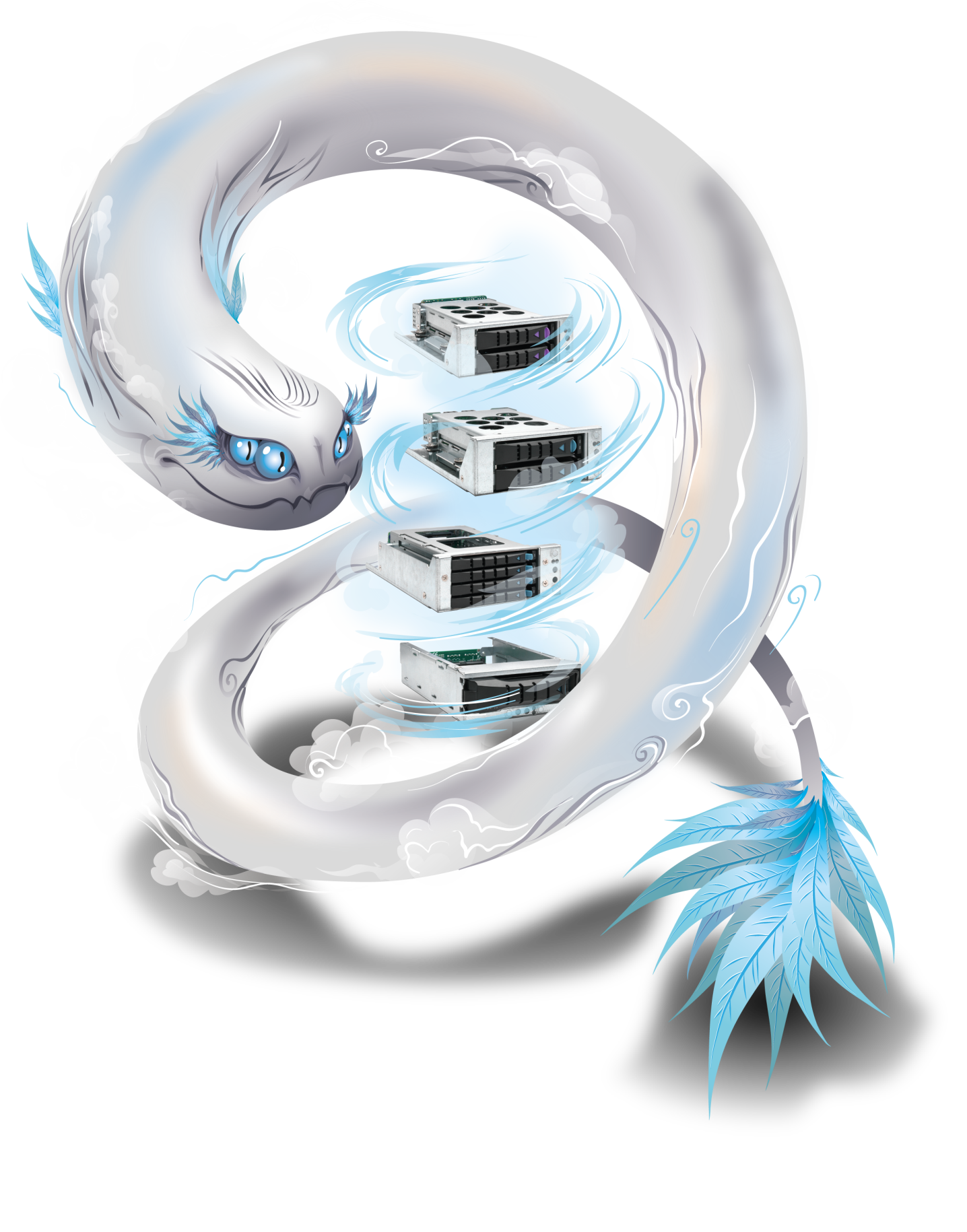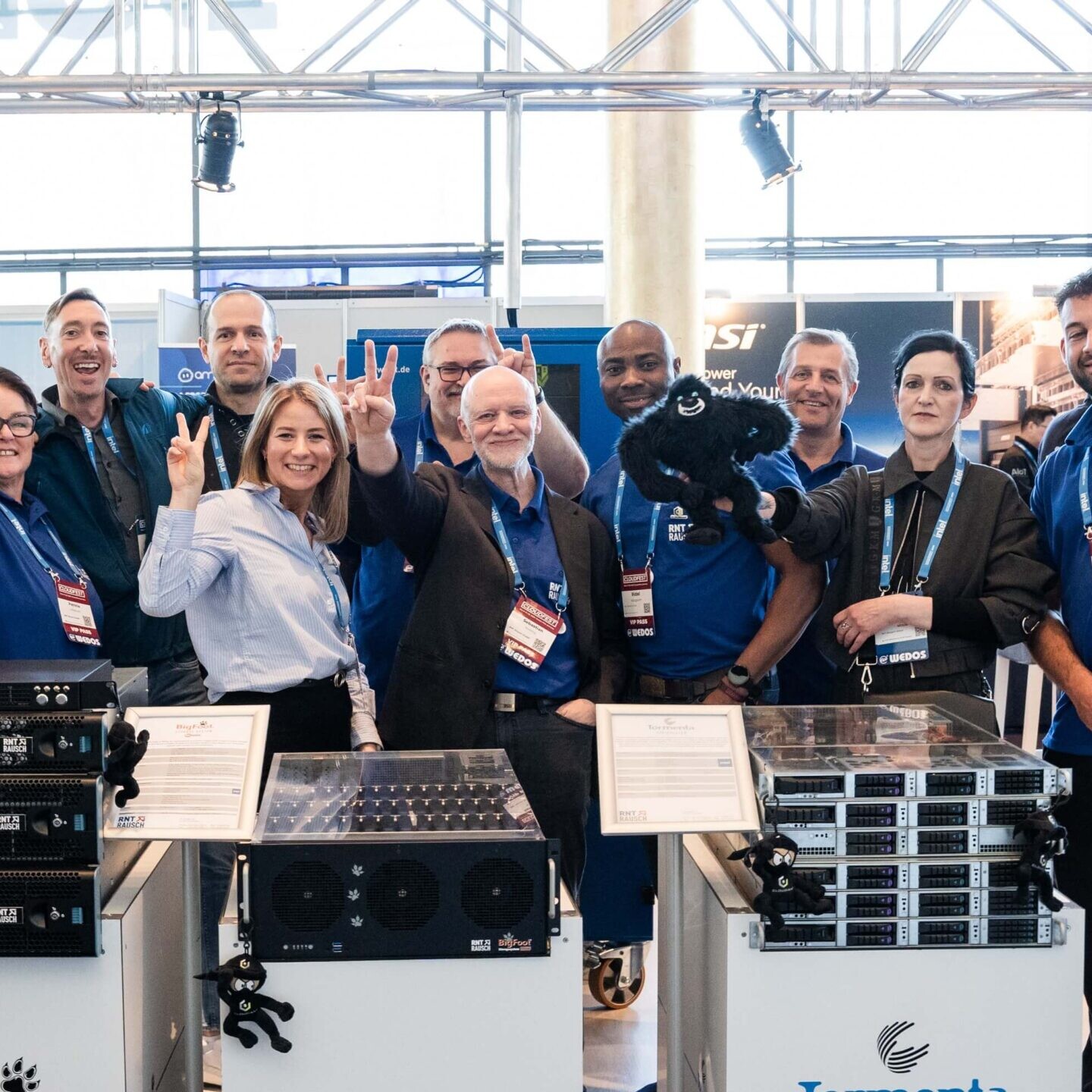Who would disagree: Full power and a reliable IT infrastructure are essential cornerstones for the success of every company. But how can companies effectively meet these high demands on their IT environment, especially in terms of speed and reliability? One possible way to achieve this goal is server clusters.
Because these power packages made up of several interconnected servers work like a perfectly coordinated team and not only give companies of all sizes more availability and high reliability. They also ensure that ongoing processes do not have to be interrupted when demands increase.
What makes server clusters so relevant for companies?
Whether a small start-up or a large corporation – if a company relies on fast data processing, server clusters are the “golden solution” to reduce system failures to a minimum and take the efficiency of the IT infrastructure to the next level. Especially in industries where every second counts – such as finance, health or e-commerce – interruptions can be really expensive or even risk human lives. With a server cluster, however, the processes in question run like clockwork without interruption, even if data traffic increases or a hardware component should go on strike.
What is a server cluster?
Definition and basics
A server cluster is a group of physical or virtual servers that, when combined, offer greater availability, better reliability and higher computing power. These servers work hand in hand and share tasks such as data processing, storage management and network requests. The big advantage? If one of the servers, also called nodes, fails for whatever reason, the others immediately step in and keep operations running – without any interruption.
Types of server clusters
Server clusters are not all the same. Depending on the requirements, there are different types, each tailored to the specific use case of each company.
A high availability cluster (HA cluster) ensures that business-critical applications and services remain available at all times – even if hardware or software fails. These clusters consist of several servers that either work in standby mode or actively together. If one server fails, another automatically takes over its tasks. This mechanism, known as failover, minimizes downtime and guarantees that operations continue smoothly, even in the event of hardware failures or maintenance work.
HA clusters are particularly indispensable in industries such as financial services, healthcare or e-commerce, where even short downtimes could mean immense financial losses or impairments in service quality. They offer companies the security they need to be able to continue working without interruption even in the event of unexpected system failures.
Load balancing clusters intelligently distribute the workload across multiple servers to maximize system efficiency and performance. By distributing requests evenly across servers in the cluster based on workload and specific algorithms, a load balancer prevents individual servers from becoming overloaded.
These clusters are perfect for web applications, cloud services, and high-traffic websites where many simultaneous user requests need to be processed. Thanks to load balancing, performance remains stable, even with high traffic. This provides a better user experience and ensures that services are always available.
HPC clusters (high performance computing clusters) are the right choice for particularly computationally intensive tasks. They are used for complex calculations, simulations and data evaluations in real time, where enormous computing power is required. In an HPC cluster, numerous servers work together in parallel to process large amounts of data in the shortest possible time.
HPC clusters are in demand in areas such as research, the automotive industry, aerospace, weather forecasting, medicine or pharmaceutical development. They combine the computing power of many servers and thus offer functions that go far beyond the capabilities of conventional systems. Thanks to their scalability, HPC clusters can be flexibly adapted to growing needs, which enables companies to always remain efficient even with dynamic requirements.
How does a server cluster work?
As already mentioned, a group of servers work together in a cluster to complete a common task. A middleware layer ensures that tasks and data are constantly distributed evenly across the various nodes. To ensure that everything runs synchronously, the nodes constantly communicate with each other and are aware of changes in the network or servers. One middleware service is load balancing, for example.
The heart of this collaboration is the failover system: if a node fails, another server takes over the tasks in no time at all without it being noticeable from the outside. Load balancing also ensures that the pending tasks are distributed fairly across the available resources. This not only increases performance, but also reduces latency across the entire system.
A well-configured server cluster therefore adapts flexibly to changes while maximizing the availability of the system.
Virtualization in clusters
Virtualization in a server cluster offers numerous advantages that help companies optimize their IT infrastructure. First, it allows for better utilization of hardware resources, as multiple virtual machines (VMs) can be run on a single physical server. This results in more efficient use of existing resources.
Another benefit is the flexibility and scalability that virtualization offers. New VMs can be created or removed quickly, making it much easier to adapt to changing requirements. In addition, virtual machines are isolated from each other, so problems in one VM do not affect the other VMs or the host server.
Administration is simplified by centralized management tools that often come with virtualization solutions. These tools allow for easy monitoring and backup of VMs. Cost efficiency is another important consideration, as reducing the amount of physical hardware required leads to savings in hardware, power, and cooling costs.
In addition, many virtualization solutions offer high availability features that ensure that VMs can be automatically migrated to other servers in the cluster in the event of a hardware failure. The ability to take snapshots and perform backups increases data security and facilitates disaster recovery.
Finally, virtualization also enables the rapid and cost-effective deployment of test and development environments without impacting the production environment.

Personalized server systems drive your company forward
With Tormenta® VarioScaler, your company has unbeatable flexibility. Start with 1U, then you can scale up to 3U later. Add the components you want – you set the pace.
Advantages of Server Clusters

Scalability
One of the biggest advantages is the impressive scalability of a server cluster. Companies can flexibly expand their IT resources at any time by simply adding new nodes to the existing cluster. This horizontal scaling allows the provision of additional computing power or more storage space – without having to completely touch the existing system. This means that the infrastructure remains agile and grows with the increasing requirements of the company. Server clusters prove to be a real wild card, especially during seasonal peaks in demand or rapid expansion phases: They can be upgraded quickly and easily, so that bottlenecks do not arise even at peak times.

Reliability and redundancy
Another strong argument for server clusters is their high level of reliability. If a server fails, another node in the cluster automatically takes over so that the entire system continues to run without disruption. This works thanks to an intelligent failover mechanism that distributes the tasks of the failed server to other nodes. This redundancy not only ensures continuous operation, but also minimizes expensive downtime. Especially for business-critical applications, where even the shortest downtime can have fatal consequences, the highest possible reliability is not only a must, but also an essential advantage.
In addition, clusters can be distributed across different locations to ensure operations even in the event of regional outages such as power problems or natural disasters. This geographical distribution increases the resilience of the cluster and ensures that operations remain stable even in extreme situations.

Cost reduction through resource bundling
Server clusters score points not only in technical terms, but also financially. By bundling resources within the cluster, the available computing power is used optimally, which significantly increases cost efficiency. What makes the whole thing financially attractive is the horizontal scalability, which allows companies to expand capacity as they need it.
Another financial advantage is flexible scalability: new hardware is only purchased when it is actually needed. At the same time, servers can be removed from the cluster if necessary and used for other purposes. This avoids unnecessary investments in unused or now redundant resources. In addition, the central monitoring and management of the cluster reduces the workload for IT teams. There are further savings in power, cooling and space, as the physical infrastructure is used more efficiently – a clear gain in total operating costs.
Server cluster vs. cloud computing – which is better for my company?
In the modern IT landscape, companies are faced with a crucial question: server cluster or cloud computing? Both models have advantages and disadvantages, but differ considerably in terms of flexibility, costs and scalability. In this section, we take a closer look at the strengths and weaknesses of both approaches and provide recommendations as to when which approach makes sense.
Cloud computing: scalability and flexibility
Advantages:
Cloud computing stands for almost limitless scalability. Resources can be flexibly adapted as needed, and the initial investment is significantly lower because the cloud provider is responsible for purchasing the hardware. Cloud services also offer global availability and access from anywhere – perfect for distributed teams and locations. Companies also benefit from current tools and applications that are usually always up to date.
Disadvantages:
Efficient cloud computing is only possible if a stable and sufficient internet connection is available. In addition, the risk of becoming dependent on the cloud provider is high, because returning your own data can become a significant cost factor and the security standards differ considerably depending on the provider. Data protection requirements (GDPR says hello) or compliance requirements (are you already prepared for NIS2?) can make it difficult to move sensitive data to the cloud. Last but not least, another disadvantage is that existing work processes within the company must be adapted to the software solution provided by the cloud provider if the company’s own or previously used software is not part of the portfolio.
Server clusters: control, performance and security
Advantages:
Server clusters are several servers in one and the same network, meaning companies retain full control over their data, their own infrastructure and, what is often crucial, data protection. Local server clusters also enable consistent, reliable performance, as they operate independently of external factors such as internet connections. With failover mechanisms and redundant hardware, failures are hardly an issue – uptime remains at a maximum.
Disadvantages:
This level of control comes at a price, however, which is primarily reflected in increased time and effort for initial installation and sometimes more difficult troubleshooting in running systems. Anyone who operates a cluster therefore needs a competent IT team to take care of the installation and operation.
When does which approach make sense?
Server clusters are particularly suitable when companies need strict control over their data and infrastructure, for example due to high data protection requirements or strict compliance regulations. Server clusters are also the ideal solution for business-critical applications that require consistently high performance, regardless of external factors such as internet connections. In the long term, they also offer a cost-effective way of handling stable workloads, as they impress with their local infrastructure and predictable performance.
Cloud computing, on the other hand, is particularly ideal when flexibility and rapid scaling are the focus, for example for companies with dynamic workloads or unpredictable demand curves. For startups or smaller companies that want to avoid high initial investments, the cloud offers a cost-effective solution, as the cost factor of hardware is eliminated. However, it is important to look closely at the pricing models of cloud providers in order to avoid unpleasant surprises when the next bill is issued. In addition, companies that operate globally or have distributed teams benefit from the high mobility and availability of the cloud, as access is possible from anywhere in the world.
However, often the best solution is a hybrid approach where companies get the best of both worlds. Critical applications remain on local server clusters while the cloud is used for flexible scaling and dynamic workloads.
Conclusion
Server clusters are a powerful solution for companies that rely on reliability, resilience and performance. By linking multiple servers together, maximum availability is ensured, which is essential for business-critical applications and data-intensive processes. Companies benefit from the flexibility to adapt the resources they need to their specific requirements while maintaining control over their infrastructure. However, it is also important to consider the benefits of cloud computing, especially when flexibility and scalability are required. Often, a hybrid approach proves to be ideal to combine the strengths of both systems and optimally meet individual needs. Companies should therefore carefully consider which approach best suits their specific requirements and goals.

Marco Matthias Marcone
Head of Marketing, RNT Rausch GmbH

NIS2 made easy: Immutable storage contributes to compliance
The new NIS2 Directive presents companies with the challenge of enhancing their cybersecurity measures and ensuring data integrity. With immutable storage, businesses can ensure that critical data is permanently protected and cannot be altered. This technology not only provides increased security but also meets the stringent requirements of NIS2.
Discover how immutable storage can help your company comply with the directive while safeguarding your sensitive information.
Other users have also read the following articles
Foundation for the security of IT ecosystems
In a data-driven world, opportunities and risks are rising equally. AMD…
CloudFest ’25 recap
CloudFest 2025 was a huge success! Our Yowie S3 Stack, Immersion Cooling, and…
Immersion cooling in the rack
Data centers are energy-intensive operations and the majority still rely on…
Object storage for AI applications:
scalable storage for data-intensive workloads
Artificial intelligence needs data – and vast amounts of it. Traditional…
SSD, HDD, NVMe and MACH.2: the truth about modern storage technologies
SSD, HDD, NVMe or MACH.2? Discover the differences, benefits and use cases of…
Modern Work 2: No signal, now what?
What does a film crew do if they have no or only a poor network signal at the…







